Experiencing Guatemala’s natural gem of Lake Atitlán is an absolute must when visiting the country. Home to Central America’s deepest lake, massive volcanos rise from the lake’s edges making for some stunning natural views. This juxtaposition and the rich Mayan culture of its surrounding communities make Lake Atitlán a popular spot. For both domestic and international tourists alike.
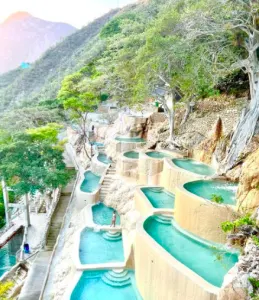
However, there is no one destination to visit when it comes to Lake Atitlán. There are numerous small villages that dot the lake’s shores, each more stunning than the last. Every town, in fact, has more or less a typical demographic of travelers that attracts them to their town. In this article, we will cover the main towns, their draws, and some fun things to do at Lake Atitlan.
Fun Things to do at Lake Atitlan
Before getting into all the great places to visit at Lake Atitlán, let me tell you a little history. And some useful logistical information. Lake Atitlán is deep in the heart of the Mayan country with more than 95 percent of the lake’s population. Belonging to one of the more than 20 Mayan ethnic groups recognized in Guatemala.
Residents mainly come from the Tz’utujil and Kaqchikel people groups. And as such several cultural aspects are still quite prevalent. This includes traditional dress, art, language, and religion. Also prevalent is the love of cacao and chocolate products. In general, several artisanal shops are located around the lake.
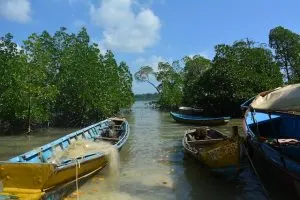
Traditional Dress in the Mayan Languages
Traditional dress is still worn by a large majority of residents and you will often hear Mayan languages being spoken amongst the locals. Some useful things to know in Tz’utujil, for example, are saqari which means “hello” and tio’x (pronounced tee-o-sh) which means “thank you”. To see Lake Atitlán is to experience and appreciate the ancient culture. Which has been ingrained in the region since long before the Spanish arrived.
As for transportation, here is a helpful guide on how you will get around while in the area. Much like the rest of Guatemala, tuk-tuks (or auto rickshaws) can be found everywhere. These are very convenient services. If you wish to travel to the next town over and do not want to walk along the main highway. Each tuk-tuk can typically hold 2 to 3 people. And will cost you around 10 Quetzals (~1 USD) per ride.
However, in most cases, it is actually faster to head down to your local dock and travel by lanchas or boat taxis. If you are trying to reach other towns. These boats serve as the main form of transportation for both locals and visitors. And is one of the most unique transport systems on the planet. Short distances will once again cost you about 10 Quetzals.
Though a ride from one end of the lake to the other may come with a higher price. Consult a local prior to paying your driver. As they will almost certainly try to charge you more than what the ride is worth. So just be aware.
Panajachel, Known as Pana
Panajachel, known affectionately as Pana by the locals. It is the main town and the hub of trade around the lake with its many markets and artisanal workshops. The town hosts the greatest number of hostels and boutique hotels (even hosting Che Guevara at one point). And is famous for its massive market days.
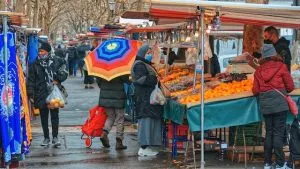
On its main street, Calle Santander, tourists can be seen perusing through the many colorful shops. Or taking a break at the numerous bars and restaurants that line the street. Panajachel is also home to one of the oldest art galleries in Central America. It is known as La Galeria, which covers themes such as the search for love and the complexity of life.
Most intercity buses to Lake Atitlán end their journey here on the lake’s north end. Meaning that in most cases you will pass through Panajachel on the way to the lake’s other communities. Though with so much to be found here, you may never end up leaving.
San Pedro La Laguna, Santiago Atitlán and San Lucas Tolimán
For those most interested in exploring the natural beauty of Lake Atitlán, look no further than the towns of San Pedro La Laguna, Santiago Atitlán, and San Lucas Tolimán. These three towns are directly at the base of some of the lake’s most striking features, the San Pedro, Tolimán, and Atitlán volcanoes.
San Lucas Tolimán is best if you wish to hike the latter two. And San Pedro La Laguna for San Pedro Volcano (obviously) while all three are easily accessible from Santiago Atitlán. San Pedro La Laguna is the main destination for adventure travel around the lake. A hub for backpackers, companies in San Pedro offer several excursions to nearby nature spots.
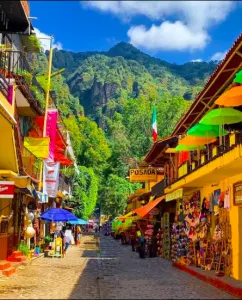
The town is also home to many hostels. And offers a wide range of bar and restaurant options for its visitors. The town truly comes alive at night given its reputation as the lake’s party district.
If you are looking to have a more traditional and quaint experience, then San Lucas Tolimán or Santiago Atitlán is your preferred option. As fewer tourists frequent these areas. Weaved art underlining the region’s strong Mayan influence and a humble cultural museum in Santiago is the local highlight of these towns.
San Juan La Laguna
Speaking of art, if you love the vibrant colors and complex designs of Mayan art then you are due for a trip to San Juan La Laguna. Located just east of San Pedro La Laguna, the town is famous for its dedication to the arts. Much of San Juan is ornately decorated with parasols. And other items hanging above its busiest streets.
Alongside these public displays, you can find dozens of pieces of accompanying street art that dive deep into the symbolism held dear by the various Mayan groups that inhabit Lake Atitlán. Here you can also find several local shops that sell all kinds of crafts from clothing to paintings. There are also only a few areas around Lake Atitlán that sport an actual sand beach. Though one of these is located just a 15-minute walk east from the town’s dock.
San Marcos La Laguna
If you are in search of a more tranquil experience full of spiritual healing and awakening. There is a community here for you as well. San Marcos La Laguna is a destination spot for hippies and nature lovers. And is where backpackers go to participate in spiritual ceremonies and rituals. There are tons of options as well!
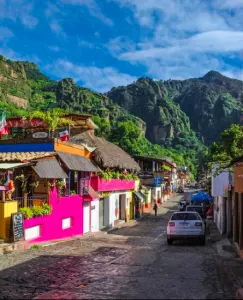
Visitors can find themselves doing guided meditations, tribal dancing, yoga, drum circles, lucid dreaming exercises, various healing techniques and readings, and cacao ceremonies. Whatever you can think of in the way of spirituality, San Marcos will have you covered.
Also located next to San Marcos is the Cerro Tzankujil Nature Reserve. It offers stunning views as you hike along a trail that overlooks the lake. A highly underrated activity that call be found inside the nature reserve is cliff jumping at an area known as El Trampolín. The largest of the platforms stands at 35 feet (10 meters) though several smaller spots exist if you want to work your way up to the big leagues.
With a better understanding of the culture and the dynamics of life in the towns surrounding Lake Atitlán. You are now more equipped as you continue in search of the right community for you. Enjoy and safe travels!

